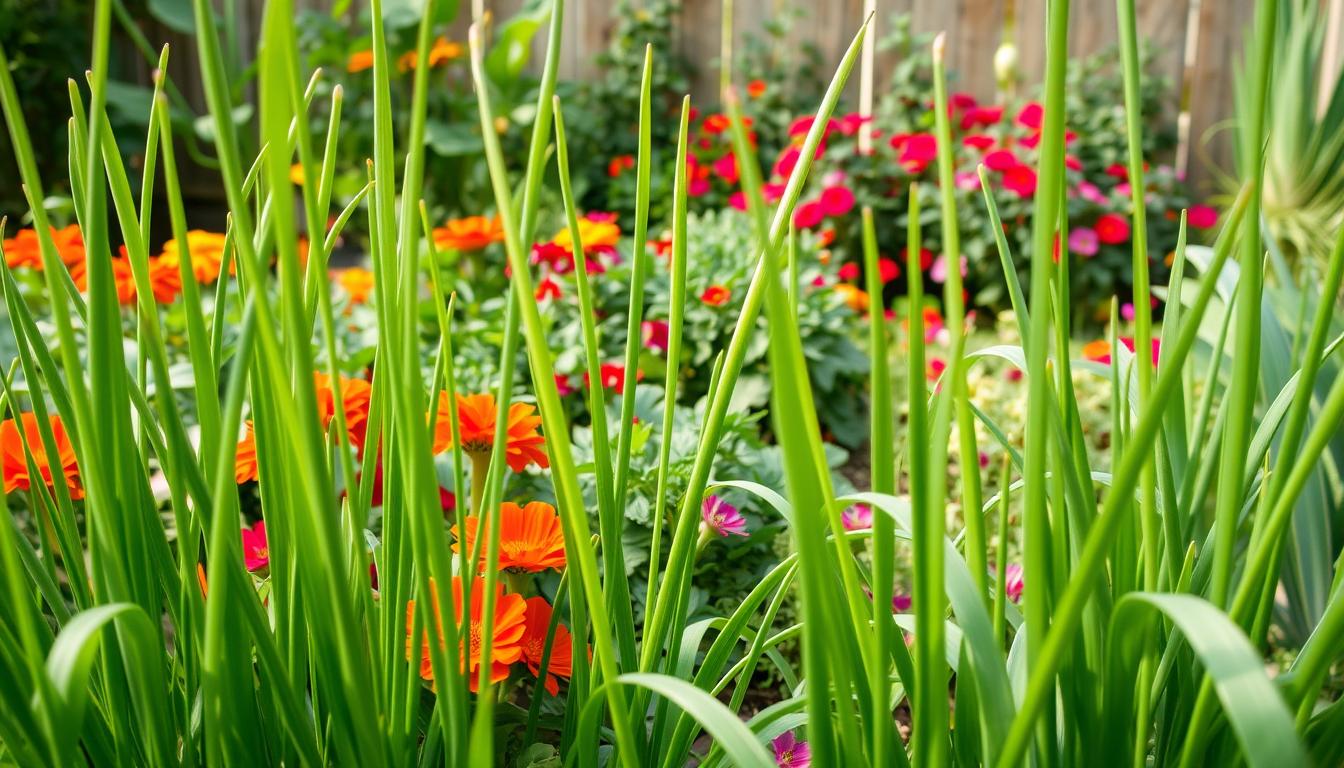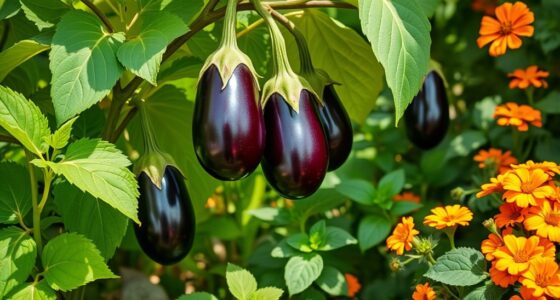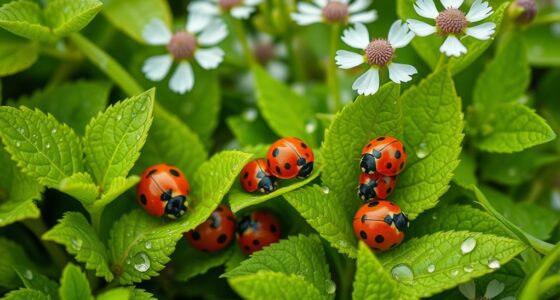Imagine stepping into your garden, surrounded by the fresh scent of herbs and crisp vegetables, and feeling that satisfying sense of accomplishment as you harvest a hearty crop. For many, gardening is more than just a hobby; it’s a passion that nurtures both the soil and the soul. In this pursuit of creating that perfect oasis, understanding the principles of companion planting can elevate your gardening experience to new heights. Green onions, with their versatility in a multitude of dishes and ease of cultivation, flourish when paired with the right companions. By incorporating green onion companion plants into your garden, you enhance not only the growth and flavor of your harvest but also the overall health of your garden ecosystem. Let’s explore how to grow green onions with companions that will lead to a more robust and bountiful garden.
Key Takeaways
- Companion planting enhances crop yield and flavor.
- Green onions thrive alongside specific plants that promote their health.
- Understanding companion plants helps in pest resistance.
- Strategic planting leads to a more fruitful harvest.
- Experimenting with companions fosters creativity in gardening.
What Are Companion Plants and Why Do They Matter?
Companion planting involves pairing different plants in your garden to create beneficial relationships. By strategically selecting green onion garden companions, you can enhance productivity while minimizing pest problems. This method takes advantage of the natural properties of plants to support one another, leading to a thriving ecosystem in your garden.
Benefits of Companion Planting
The companion planting benefits are numerous. You can expect improved nutrient uptake, natural pest deterrence, and even increased growth rates. When plants grow together, they can share resources and create an environment that nurtures overall health.
How Companion Plants Help Green Onions
Green onions particularly benefit from being planted alongside compatible species. These companions can help repel pests and enhance nutrient absorption. For instance, pairing green onions with certain herbs and vegetables can bolster their growth and flavor, creating a more productive garden space.
Common Misconceptions
There are various companion planting misconceptions that can lead to confusion. One prevalent myth is that any two plants will thrive together if planted in proximity. This is far from the truth, as some combinations can lead to competition or hindered growth. Understanding the dynamics of plant relationships is crucial for effective companion planting.
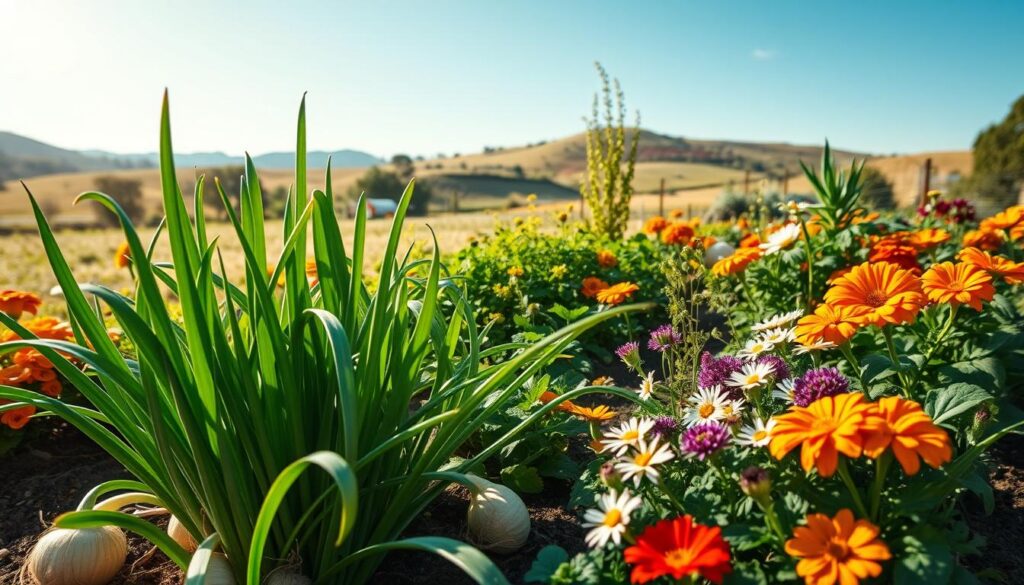
Top Companion Plants for Green Onions
Green onions thrive when planted alongside certain companions. These plants not only enhance the growth of green onions but also contribute positively to the garden environment. Understanding the best companions for green onions can lead to a healthier and more fruitful garden.
Best Vegetables to Pair with Green Onions
When considering vegetables that grow with green onions, beets and carrots emerge as excellent options. Both root vegetables have relatively shallow root systems, allowing them to coexist without competing for space. They do not draw the same nutrients from the soil, enabling a harmonious growth environment for your green onions.
Herbs That Thrive Near Green Onions
In the realm of herbs for green onion companion planting, dill and chamomile stand out. These herbs not only complement the flavor of green onions but can also stimulate their growth. Dill attracts beneficial insects that help pollinate your garden, while chamomile can boost plant health with its natural properties.
Flowers That Support Green Onion Growth
Adding flowers to your garden can be beneficial as well. Marigolds and nasturtiums are fantastic companions for green onions. Marigolds deter unwanted pests that can harm your vegetables, while nasturtiums attract pollinators, encouraging a vibrant ecosystem. These flowers enhance the growth of green onions, promoting a bountiful harvest.
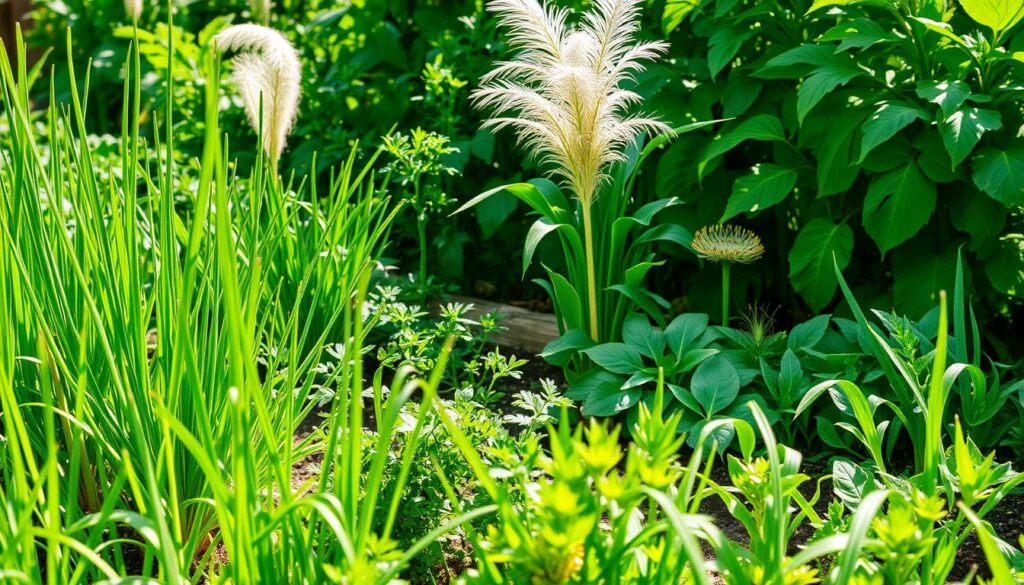
Planting Strategies for Companion Plants
Successful garden planning hinges on smart planting strategies for green onions and their companions. When you’re ready to plant green onions alongside companions, consider their arrangement and spacing carefully. This approach not only promotes healthy growth but also maximizes the benefits of companion planting.
Tips for Planting Green Onions with Companions
Begin with choosing companion plants that enhance the growth of green onions. Opt for fast-growing varieties to fill spaces created by slower-growing plants. This tactic helps ensure an efficient use of garden space and resources. Remember to stagger planting times according to your seasonal planting guide for optimal results.
Ideal Spacing and Arrangement
Understanding the ideal spacing for companion plants can make a significant difference in yields. Green onions thrive when given adequate breathing room to soak up sunshine and nutrients. A general rule of thumb is to plant them 4-6 inches apart. This spacing allows for proper airflow, reducing the risk of disease while benefiting from lower competition.
Seasonal Considerations
Seasonal planting brings another layer of complexity to your strategy. You should align your planting schedule with the growing seasons of both green onions and their companions. For example, consider planting green onions in early spring alongside cool-weather greens such as lettuce or spinach. This technique not only maximizes your harvest but also ensures that all plants flourish throughout the growing season.
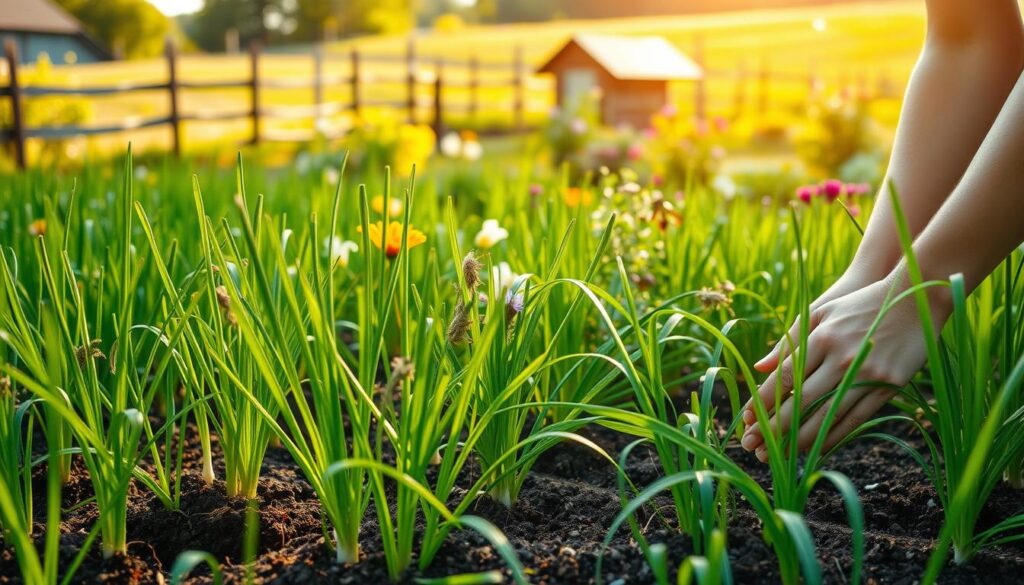
Pest Control Using Companion Plants
Pest control with green onions offers an effective way to protect your garden while maintaining an organic approach. The strong aroma of green onions serves as a natural deterrent against various harmful bugs. This quality makes them valuable allies when planted alongside other crops vulnerable to pests.
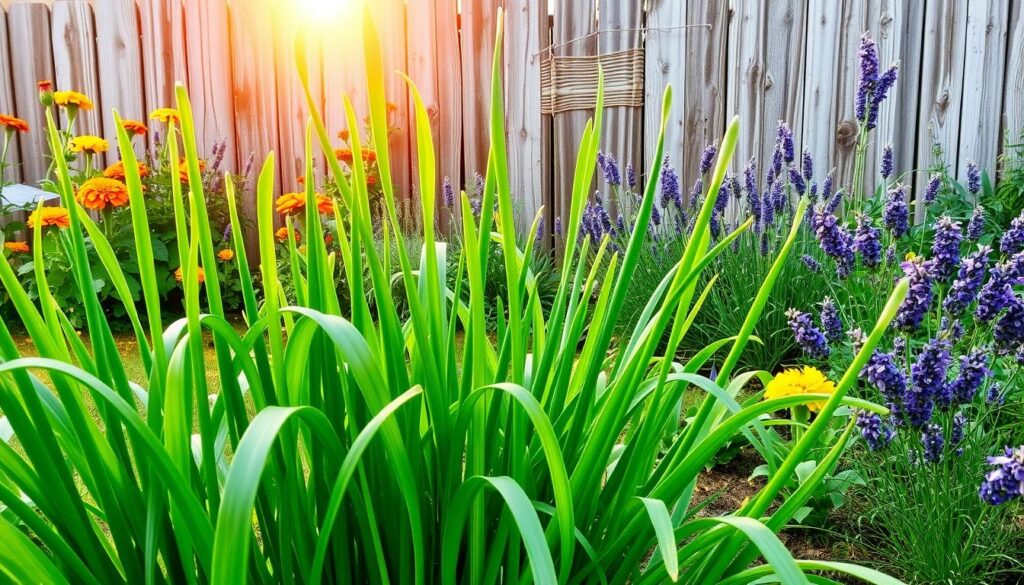
How Green Onions Deter Pests
Green onions are recognized for their ability to confuse and repel pests through their pungent scent. This characteristic can significantly decrease pest populations near other plants. By incorporating green onions into your garden arrangement, you can create a shield against a variety of insects, making them highly efficient green onion pest deterrents.
Effective Companion Plants for Pest Management
To maximize pest control with green onions, combining them with other companion plants enhances your garden’s resilience. Here are effective choices:
| Companion Plant | Pest It Deters | Benefit |
|---|---|---|
| Marigolds | Nematodes | Repel harmful soil pests |
| Dill | Onion Maggots | Attracts beneficial insects like wasps |
| Basil | Flies and mosquitoes | Improves overall plant health |
These companion plants not only work well with green onions but also support biodiversity in your garden, making pest management a more balanced and sustainable endeavor. Use these green onion pest deterrents strategically to protect your crops from pests effectively.
Maximizing Soil Health with Companion Planting
Maintaining optimal soil health is essential for a thriving garden. Companion planting provides a unique opportunity to enhance the benefits of your garden by focusing on nutrient combinations for green onion garden. Different plants can work in harmony to support each other, leading to healthier soil and improved plant growth.
Nutrient-Rich Combinations for Your Garden
Incorporating the right companions can boost the overall nutrient profile of your soil. For example, growing green onions alongside beets introduces a complementary relationship, sharing similar nutrient requirements. When you add legumes to the mix, they enrich the soil with nitrogen, creating a fertile environment beneficial for your green onions and other plants.
Enhancing Soil Structure with Companion Plants
Companion planting is effective for improving soil structure as well. The diverse rooting systems of various plants prevent soil compaction, promoting better drainage and air circulation. This enhanced soil health in companion planting enables roots to access essential nutrients and moisture more effectively, which supports the growth of your green onion garden.

Planting Green Onions in Containers
Container gardening with green onions allows you to enjoy these flavorful vegetables no matter the size of your outdoor space. Pairing green onions with the right companion plants enhances growth and productivity. Utilizing compact plants not only maximizes space but also creates a vibrant garden display.
Best Companion Plants for Container Gardens
Choosing the right companions for your green onions in container gardens can significantly impact their growth. Here are some excellent options:
- Thyme: This herb thrives alongside green onions and helps deter pests.
- Radishes: Fast-growing radishes won’t compete excessively for root space.
- Basil: This fragrant herb can enhance the flavor of green onions while attracting beneficial insects.
- Chives: These alliums supplement the flavor profile and share similar growing conditions.
Tips for Successful Container Gardening
To ensure your container garden thrives, keep these successful container gardening tips in mind:
- Choose pots with adequate drainage to prevent root rot.
- Use high-quality potting mix enriched with organic matter for nutrient retention.
- Water consistently but avoid overwatering to maintain healthy roots.
- Fertilize regularly with organic options to boost growth.
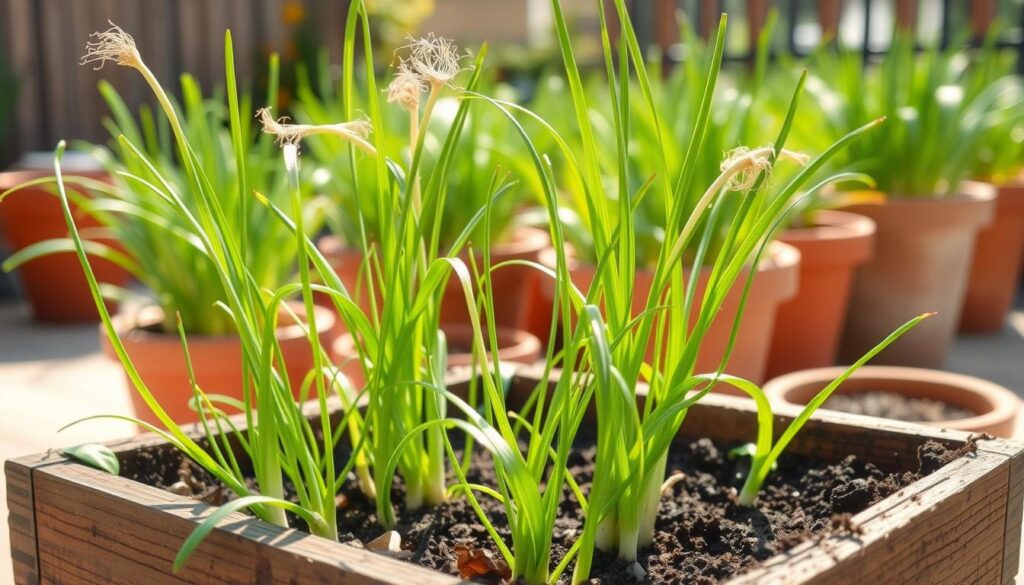
Implementing these strategies will help you create a thriving container garden filled with healthy green onions and their beneficial companions.
Organic Gardening and Companion Planting
Embracing organic gardening with green onions presents an opportunity for you to cultivate a thriving garden in a sustainable manner. This approach focuses on natural methods, reducing the need for synthetic chemicals while promoting a healthy ecosystem. Within organic practices for green onions, companion planting showcases tremendous advantages that enhance both plant growth and soil health.
Benefits of Going Organic with Green Onions
Choosing organic gardening methods can significantly impact your green onion yield. By growing your green onions organically, you not only prioritize your health but also the environment. Natural pest control reduces chemical exposure, and the emphasis on biodiversity leads to a more resilient garden. These practices support microbial life within the soil, which can improve nutrient availability and enhance the taste of your harvest.
Companion Plants That Boost Organic Practices
Incorporating companion plants into your organic gardening with green onions is a smart strategy. Certain plants, such as basil and carrots, work harmoniously with green onions, enhancing their growth while attracting beneficial insects. Additionally, these companions can provide shade and moisture retention for your green onions, enriching the overall garden ecosystem.
| Companion Plant | Benefits | Planting Tips |
|---|---|---|
| Basil | Repels pests, enhances flavor | Plant alongside green onions for mutual benefits. |
| Carrots | Improves nutrient absorption | Space adequately to avoid overcrowding. |
| Lettuce | Provides shade, conserves moisture | Interplant to maximize garden space. |
| Marigolds | Repels harmful insects | Place around green onions for protection. |

Common Mistakes in Companion Planting
Understanding the nuances of companion planting can enhance your garden’s productivity. Nevertheless, several common mistakes in companion planting can hinder your success. For instance, overcrowding in gardens often leads to competition among plants for nutrients, light, and space. Recognizing how each plant grows and interacts with its neighbors is essential for creating a flourishing ecosystem.
Overcrowding: How Much is Too Much?
Overcrowding is frequently overlooked, yet it can severely impact your gardening efforts. When plants are placed too closely together, they compete for limited resources. This competition often results in weaker plants with lower yields. It’s vital to ensure that you maintain adequate spacing to allow each companion plant to thrive without detriment to its neighbors.
Ignoring Growth Habits of Plants
Disregarding the growth habits of companion plants is another mistake that can undermine your gardening strategy. Different plants have unique growth patterns and requirements that you must account for. For example, tall plants may overshadow shorter ones, while aggressive growers can restrict the growth of their slower counterparts. Familiarizing yourself with these habits will enable you to optimize plant arrangements and enhance overall garden health.

Seasonal Planting Guide for Green Onions
Understanding the best seasons for green onion planting ensures healthy growth and a bountiful harvest. Green onions thrive when planted at optimal times, which varies by region. Using a seasonal planting guide for green onions can help you choose the right moment to sow your seeds. Proper planning allows you to pair your green onions with beneficial seasonal companion plants, enhancing both their growth and pest resistance.
Best Seasons for Planting Green Onions
Green onions are typically planted in spring or fall. The spring season is ideal for warmer regions, while fall planting suits cooler areas. Here’s a quick breakdown of when to plant:
- Spring Planting: Start in March or April when soil temperatures rise.
- Fall Planting: Aim for September or early October to allow growth before frost.
Ideal Companion Plants for Each Season
Choosing seasonal companion plants will maximize your green onion crop. Here’s a guide to pairing while following a seasonal planting guide for green onions:
| Season | Companion Plants | Benefits |
|---|---|---|
| Spring | Lettuce, Radishes | Provides cover and moisture retention |
| Summer | Marigolds, Basil | Deters pests effectively and enhances flavor |
| Fall | Kale, Spinach | Competes less for nutrients and benefits from cooler temperatures |
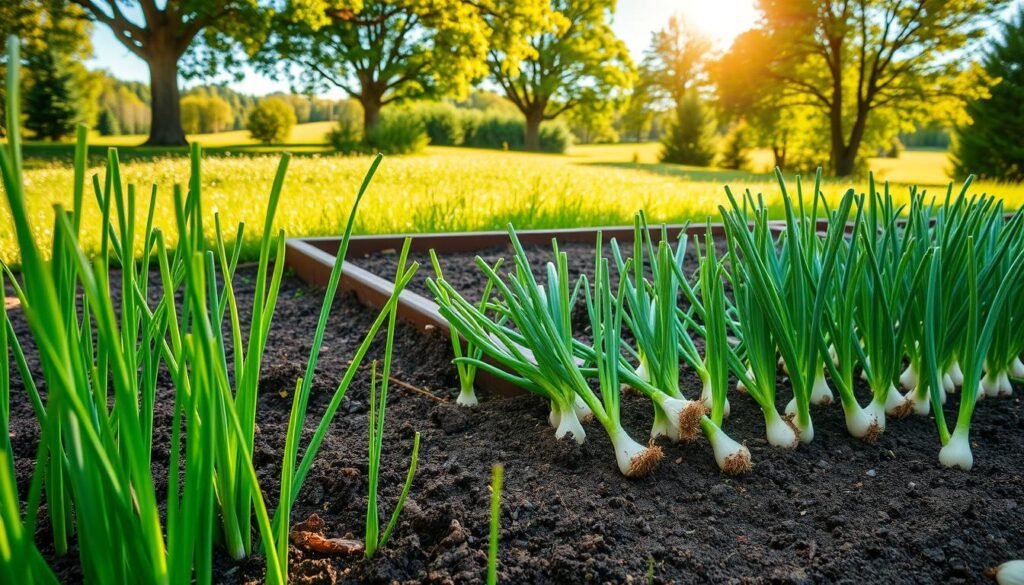
Harvesting Green Onions with Companion Plants
Effective harvesting green onions requires attention to the right timing for onion harvest. Generally, you can pick green onions once they reach a thickness of at least half an inch. This timing ensures you enjoy them at their peak flavor. You can choose to harvest them young for salads or allow some to mature for cooking needs. Whichever method you select, keeping your companion plants strong and healthy remains important.
Optimal Timing for Harvesting
Timing for onion harvest can vary slightly based on the variety and planting conditions. Regularly monitoring the size of your green onions helps in determining when they are ready. They grow best in cool weather, with early spring or fall being prime times for harvesting. Consider using a knife or garden scissors for the cleanest cut, leaving some of the bulb intact for future growth.
Maintaining Healthy Companion Plants Post-Harvest
After harvesting green onions, maintaining post-harvest companion plant care is essential. These plants not only contribute to overall garden health but also deter pests and attract beneficial insects. To keep the companions thriving, provide adequate watering and consider mulching to retain moisture. Regular inspections for pests and diseases allow you to address any issues promptly, ensuring a continuous support system in your garden.
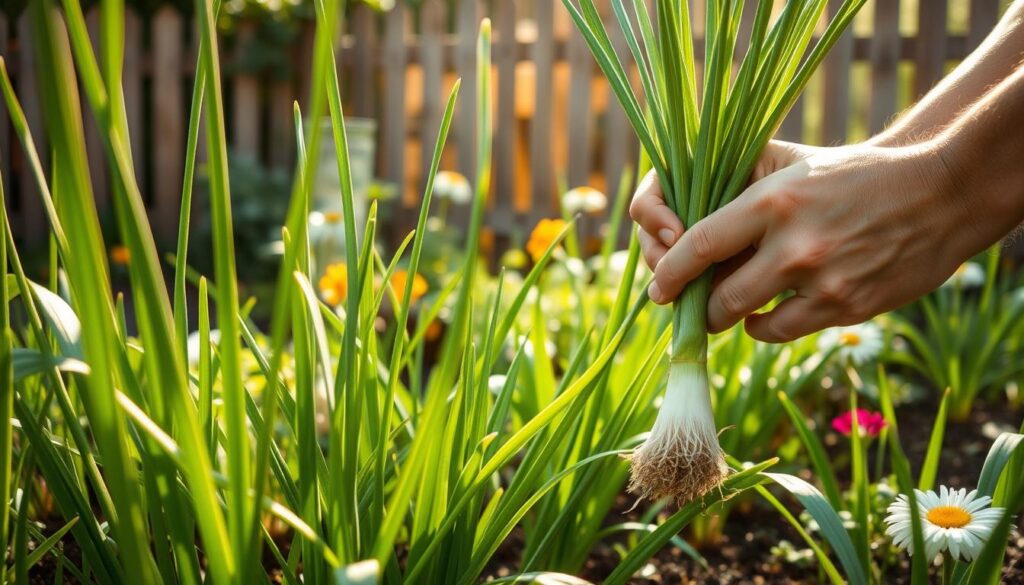
Real-Life Success Stories
Many individuals and communities have discovered the incredible benefits of companion planting through shared experiences. Observing how different plants can thrive together opens up opportunities for greater yields and healthier gardens. The stories below showcase the benefits realized in community gardens and home gardens alike.
Community Gardens and Companion Planting
Community gardens often serve as a laboratory for discovering success stories in companion planting. Participants regularly share their experiences highlighting enhanced growth and pest resistance. By planting green onions alongside carrots or tomatoes, gardeners report not just larger harvests but also improved flavors in their crops. Community members actively exchange tips on maximizing space and resources while building a spirit of collaboration. Walking through these gardens, one can see vibrant plants growing in harmony, a testament to effective companion planting strategies.
Home Garden Success: Testimonials
In home gardens, numerous testimonials illustrate the positive impact of companion planting on garden health and yield. Gardeners express satisfaction in seeing their plots flourishing by combining different species. For instance, pairing green onions with cucumbers and peppers has yielded impressive results. Many note that incorporating companion plants has not only beautified their spaces but has also provided a natural method for pest control, reducing the need for chemicals. Sharing these home garden testimonials inspires others to embrace companion planting, leading to more successful and sustainable gardening practices.
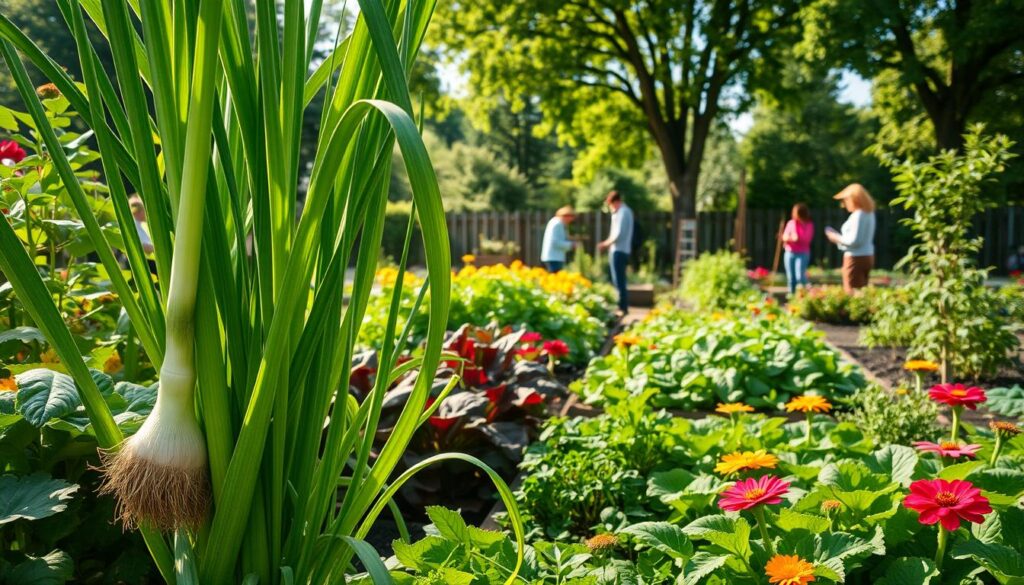
Troubleshooting Companion Plant Issues
As you cultivate your green onions, troubleshooting green onion problems may become necessary. Identifying issues early can make a significant difference in maintaining a thriving garden. Common concerns include yellowing leaves, stunted growth, or poor overall vigor. These issues often arise from companion plant issues or environmental stresses. Understanding the signs and knowing how to respond can lead to healthier plants.
Identifying Problems with Your Green Onions
Pay attention to the health of your green onions. Look for signs such as:
- Yellowing leaves indicating nutrient deficiencies or possible companion plant issues.
- Stunted growth which might suggest inadequate light or overcrowded plants.
- Wilting can signal inadequate watering or root problems.
Regular checks will help you notice these symptoms early, allowing for quick intervention.
Adjusting Companion Plant Choices
When faced with these problems, adjusting planting choices can provide relief. Here are some strategies to consider:
- Evaluate the compatibility of your companion plants. Some may not benefit your green onions and could lead to companion plant issues.
- Change the location of your plants or modify your care routine. Sometimes, simple adjustments like changing watering practices make a significant difference.
- Incorporate new companions that complement or enhance the growth of your green onions, ensuring they thrive together.
Taking the time to monitor and adjust your garden practices will help ensure the successful growth of green onions in harmony with their companions.
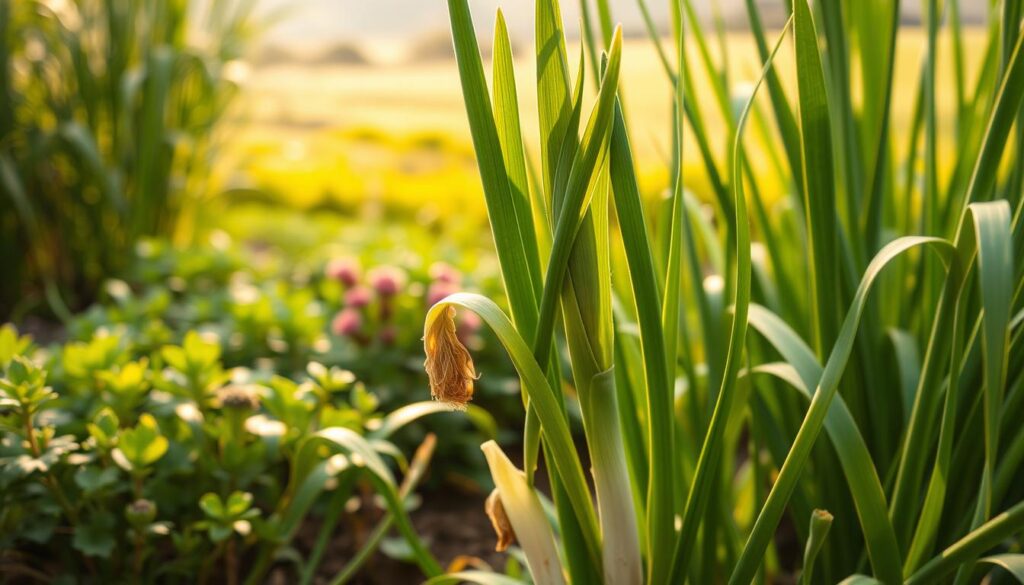
Conclusion: The Benefits of Harmonious Planting
As you reflect on the benefits of companion planting, it’s clear that your garden can thrive when you select the right plants to grow together. By integrating green onions with suitable companions, you can enhance growth, improve pest control, and boost overall soil health. Not only does this approach nurture your plants, but it also creates a flourishing ecosystem in your backyard.
Recap of Companion Planting Benefits
Emphasizing the advantages of companion planting, remember that each plant contributes uniquely to the space around it. Pairing green onions with companions helps to maximize your harvest while minimizing issues such as pests and poor soil quality. These strategies provide valuable green onion planting advice, ensuring that every season brings you closer to a vibrant garden.
Encouragement to Experiment in Your Garden
Don’t shy away from experimenting with companion plants in your garden. Embrace the opportunity to try new combinations that could lead to remarkable results. Each experiment enriches your gardening journey and can yield diverse harvests tailored to your culinary preferences. So grab your gardening tools and let your creativity flourish as you delve into the world of companion planting!
